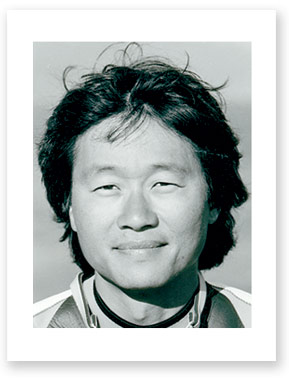
AS YOU RECEIVE THIS ISSUE, Olympians Mike Gebhardt and Lanee Butler will be competing in Sydney, Australia, September 16th to the 24th. While the competition heats up, a movement to replace the current Mistral IMCO with the Formula Class racing program is taking place.
Formula Class is a new concept of racing that has been growing in popularity, especially in Europe, within the past two years. It is supported by the industry and pretty much by all those who represent what windsurfing is today. The concept is fast, fun, and simple. Pick one board and three sails and that is the Formula equipment you will use for the event.
The idea sounds good and it is far more representative of what modern windsurfing is: performance and early planing, with a restriction on the equipment syndrome. It is indeed a positive step for the future of racing. Even the Professional Windsurfing Association (PWA) sees the Formula as a platform for future World Cup racing. The PWA in recent days has been the biggest lobbyist to get the Formula Class adopted by the International Regulations Committee of the International Sailing Federation (ISF), which was formerly the IYRU.
Even Bjorn Dunkerbeck maintains that if Formula racing gets into the Olympics, he will retire from the World Cup and focus on Formula racing. The long-time champion would be a pretty big carrot for the class and clearly, a new racing formula destined for success.
But the issue for the ISF is more complicated than it appears and the status of windsurfing in the Olympics is far more consequential than you might think. There is a small group of concerned people, and I would place myself amongst them, who argue that if windsurfing wants to find a quick way out of the Olympics, then the Formula Class is a perfect exit formula.
One has to consider the fact that the International Olympic Committee, (IOC) is pressed to cut back on the number of recognized sports. Already, they’ve managed to cut back on the number of countries by allowing only the top thirty-six competitors who qualify.
Currently, windsurfing is one of the eleven yachting events recognized by the IOC. While the Formula Class might be more representative of what windsurfing is today, imposing the class to replace the Mistral IMCO will take it out of the protective brotherhood of the powerful yachting association and place it alone in a vulnerable position. Don’t think for a minute that the IOC is not prone to pick on the weak!
The issue at hand is performance. The current Mistral IMCO is not the fastest or the sexiest, but it is a sailable platform for winds between zero and thirty knots. It is a tactical light to medium wind machine that can plane into a performance mode or fall into a sub-planing, yachting experience. It is the only class that can bridge the world of windsurfing with that of yachting. And that is what we need to keep it alive in the Olympics.
The Formula Class only performs in wind ranges higher than six knots. It does not have a centerboard and when underpowered, it has no tactical maneuverability. To gain performance in low winds, it is a high-cost, high-tech game. Even though gear restrictions are in place, compared to the IMCO, it is considerably more expensive.
Advertisement
One could predict a 100% probability that there will be an Olympics when winds do not rise above six knots. There have been plenty of world-class events in the past during which the winds did not support competition. During the Olympic event in Atlanta, sixty percent of the races were held in winds below six knots. So how many times can we expect the IOC to understand the unique demands of windsurfing? The answer might be, zero.
The day will come when yachting will be asked to reduce the number of classes. The IMCO or a similar product could stand favorably if it upheld the following advantages: 1) affordability, 2) excellent global participation for the average man, and 3) a strict one-design and simple race management.
I took a prototype board similar to the IMCO out yesterday in winds of zero to six knots. To my surprise, three hours went by as I found great pleasure in playing with the cat-paw winds. Access to this wind range is a part of windsurfing we’ve all forgotten. If more and more people can find such activity, this sport will grow once again. Unfortunately, the Olympics offer the last arena where competitive windsurfing exists in such a wind range. For the sake of the future, it should be preserved as a form of yachting, no matter how distant the sport has moved from the roots.
There is a structural problem when a sport neglects the responsibilities of its fundamentals. Windsurfing has suffered such neglect. It has become an elitist toy for those blessed by an abundant wind. The desire to replace the IMCO with the Formula Class arises from a hangover caused by the intoxication of excessive wind.
Let’s hope the hangover will pass soon.
—John Chao
Publisher/Editor
For more comments turn to A New Formula or Status Quo? by Bruce Kendall

